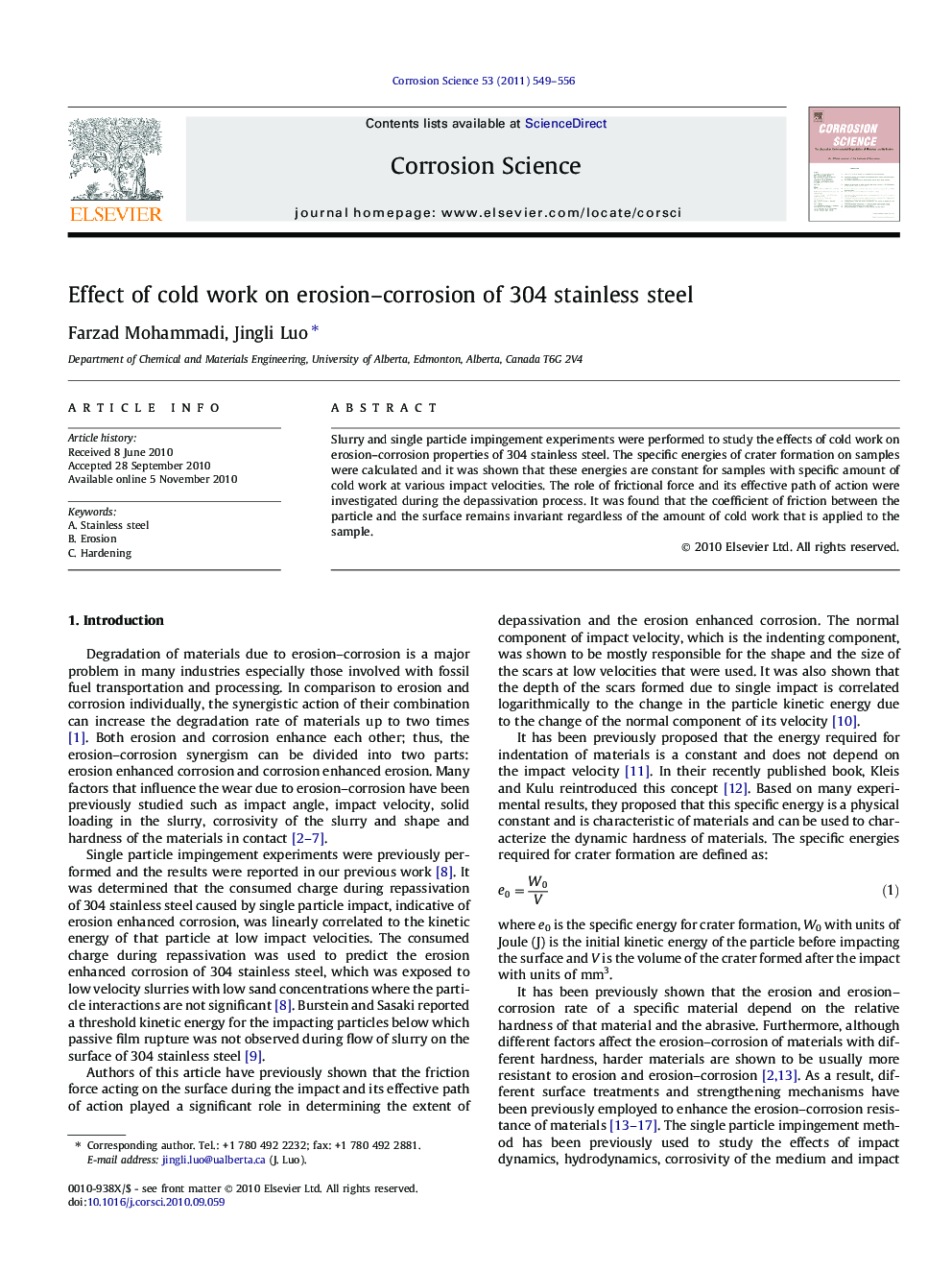| Article ID | Journal | Published Year | Pages | File Type |
|---|---|---|---|---|
| 1470230 | Corrosion Science | 2011 | 8 Pages |
Slurry and single particle impingement experiments were performed to study the effects of cold work on erosion–corrosion properties of 304 stainless steel. The specific energies of crater formation on samples were calculated and it was shown that these energies are constant for samples with specific amount of cold work at various impact velocities. The role of frictional force and its effective path of action were investigated during the depassivation process. It was found that the coefficient of friction between the particle and the surface remains invariant regardless of the amount of cold work that is applied to the sample.
Research highlights► Specific energies of crater formation for 304 stainless steel samples with different amounts of applied cold work were calculated and it was shown that these energies are constant at each percentage of cold work. ► The coefficient of friction between the surface and the impacting particle remains unchanged regardless of the amount of applied cold work to the samples. ► Erosion enhanced corrosion rate of 304 stainless steel in water–sand slurry does not depend on the hardness of steel, which may be caused by work hardening of the surface due to flow of slurry on the surface.
